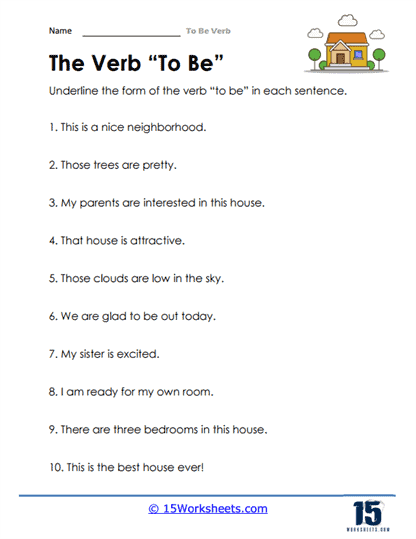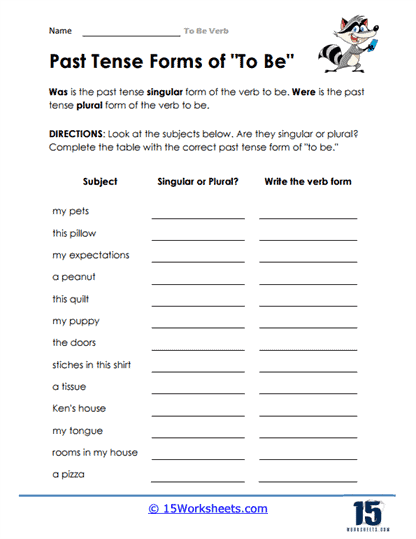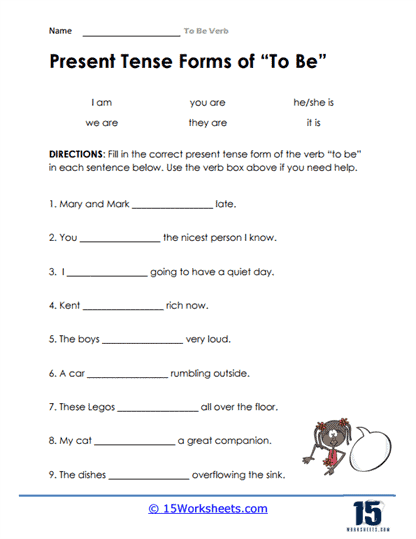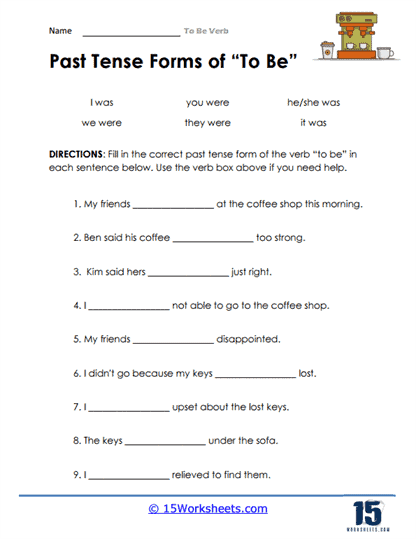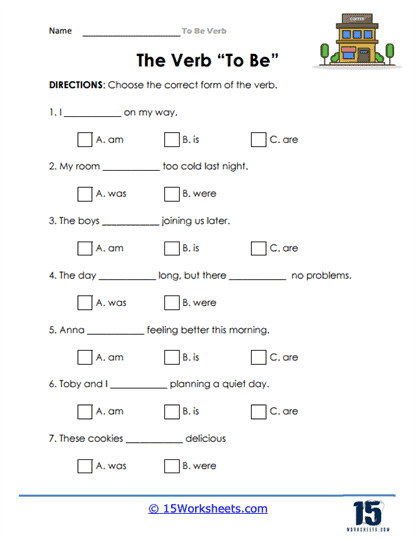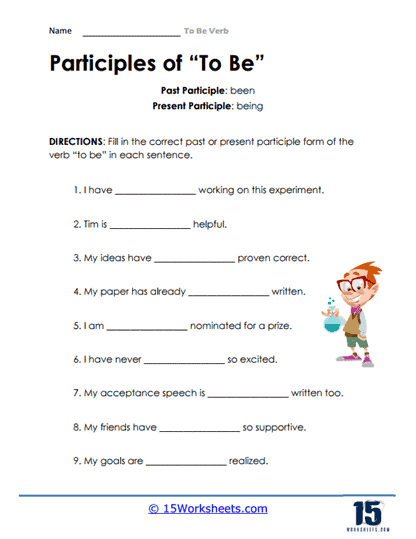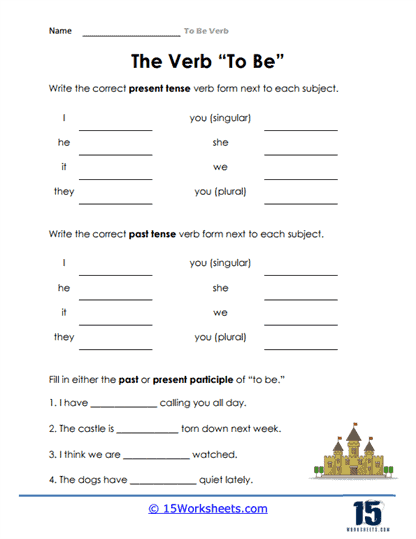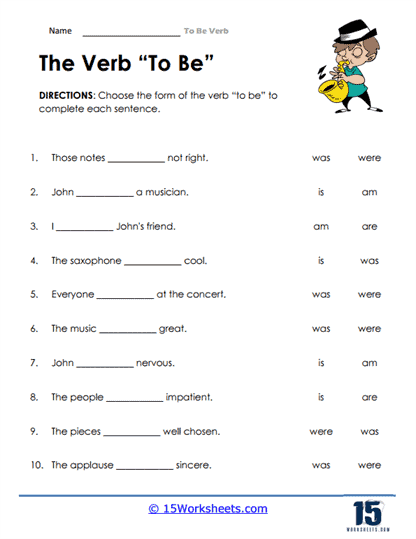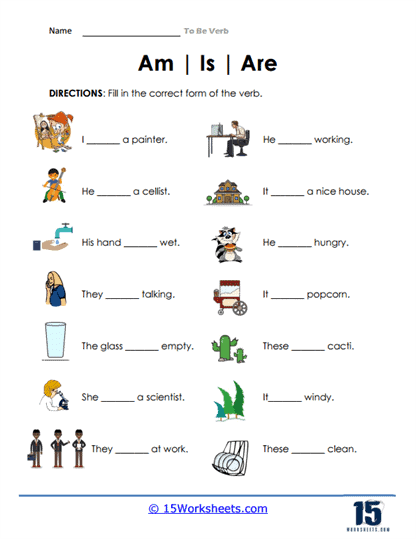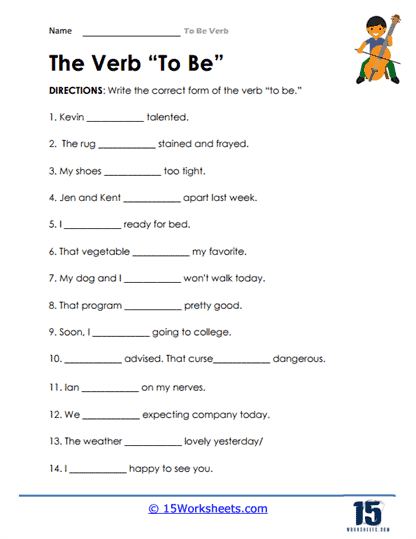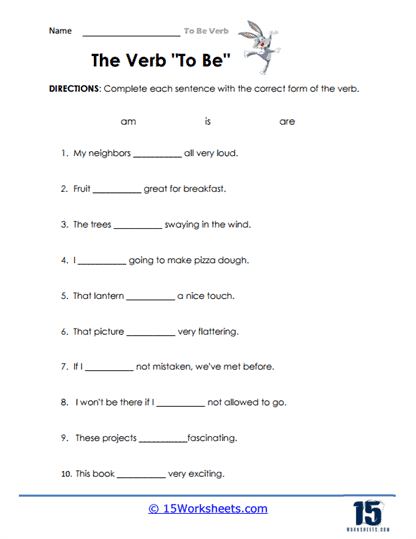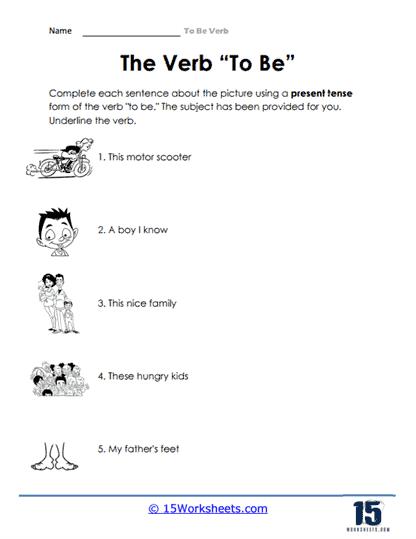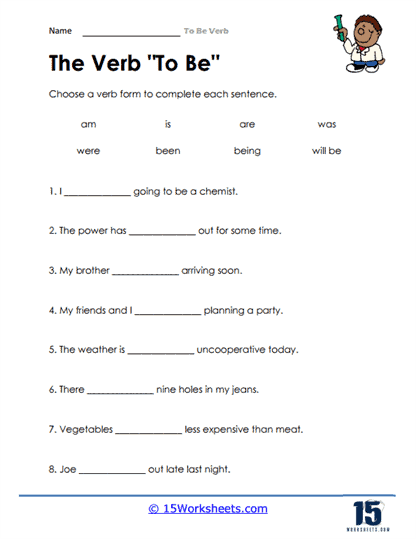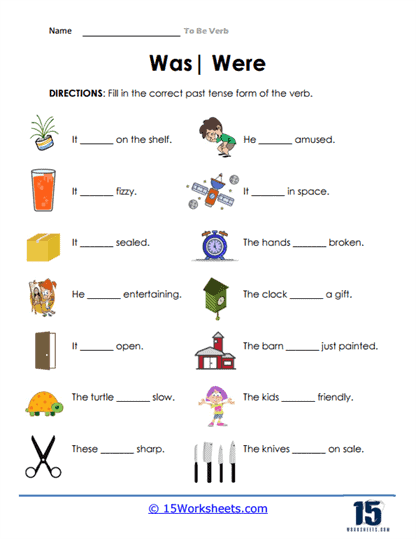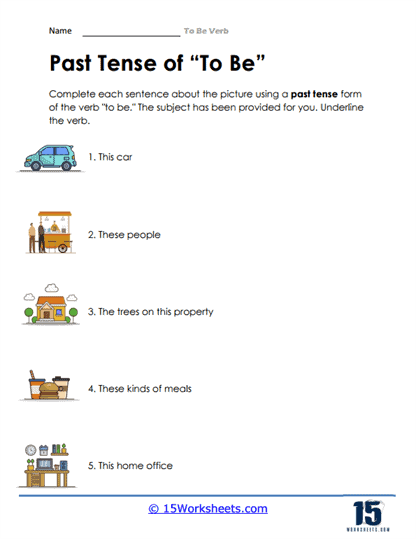The Verb "To Be" Worksheets
All About These Worksheets
This is an engaging and comprehensive collection of grammar worksheets designed to help learners of all ages and proficiency levels conquer one of the most fundamental and versatile verbs in the English language: “to be.” Whether you are a beginner looking to grasp the basics or an advanced learner aiming to fine-tune your understanding, this collection offers a structured and intuitive approach to mastering the various forms and applications of “to be.”
What Are To Be Verbs?
“To be” verbs, also known as linking verbs, are a fundamental aspect of English grammar. They play a crucial role in connecting the subject of a sentence to its complement, which can be either an adjective, noun, or pronoun. Understanding “to be” verbs is essential for constructing clear and meaningful sentences, as they help describe states of being, identify attributes, and express existence. In this discussion, we will explore the different forms and uses of “to be” verbs in English grammar.
Forms of “To Be” Verbs: The primary forms of “to be” verbs are “am,” “is,” “are,” “was,” and “were.” Each form corresponds to specific subjects and tenses:
- Present Tense:
- “I am”
- “You are”
- “He/She/It is”
- “We are”
- “They are”
- Past Tense:
- “I was”
- “You were”
- “He/She/It was”
- “We were”
- “They were”
- Using “To Be” as a Linking Verb: As a linking verb, “to be” connects the subject of a sentence to its complement, which can be an adjective, noun, or pronoun. For example:
- “She is happy.” (The subject ‘She’ is linked to the complement ‘happy.’)
- “John is a doctor.” (The subject ‘John’ is linked to the complement ‘doctor.’)
Uses of “To Be” Verbs
- Expressing Identity and Existence: “To be” verbs are used to indicate identity or existence in sentences. For instance:
- “I am a teacher.” (Expressing identity)
- “There is a book on the table.” (Expressing existence)
- Describing Characteristics and States of Being: “To be” verbs are employed to describe the qualities or states of being of the subject. For example:
- “She is intelligent.” (Describing a characteristic of the subject ‘She.’)
- “They were tired after the long journey.” (Describing the state of being of the subject ‘They.’)
- Forming Continuous Tenses: “To be” verbs, in combination with the present participle (-ing form of the verb), are used to create continuous tenses:
- “He is studying for his exams.” (Present continuous)
- “They were playing soccer in the park.” (Past continuous)
- Forming Passive Voice: The past participle of a verb is combined with different forms of “to be” to create passive voice sentences:
- “The cake was baked by Mary.” (Past tense, passive voice)
- Indicating Future Actions: “To be” verbs, alongside “going to” or “will,” express future actions:
- “I am going to visit my grandparents.” (Future intention)
- “They will be at the party tomorrow.” (Future state)
Common Mistakes with “To Be” Verbs
- Subject-Verb Agreement: It’s essential to match the correct form of “to be” with the subject. For example, “She are” is incorrect; it should be “She is.”
- Contractions: Using contractions like “I’m,” “you’re,” or “he’s” in informal speech is common. However, learners should be cautious not to confuse contractions with other forms of “to be,” such as “they’re” and “there.”
- Misusing “Was” and “Were”: “Was” is used for singular subjects (e.g., He was), while “were” is used for plural subjects (e.g., They were). Avoid using “were” with singular subjects or vice versa.
In conclusion, “to be” verbs are an integral part of English grammar, serving as linking verbs to connect subjects with their complements. They allow us to express identity, existence, characteristics, and states of being in various tenses. Understanding the correct usage of “to be” verbs is essential for effective communication and building strong, grammatically sound sentences in English.
This is a well-structured and comprehensive collection of grammar worksheets that empowers learners to confidently navigate the complexities of the verb “to be.” With its interactive exercises, real-life examples, and gradual progression from basic to advanced concepts, this collection is a valuable resource for students, teachers, and language enthusiasts alike. By mastering “to be,” learners will take a significant step towards achieving fluency and accuracy in English communication.

